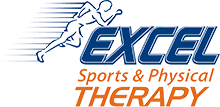Sometimes, you don’t realize how important the muscles in your forearms are until you get injured. For such a small part of the body, the muscles, ligaments, bones and tendons in your forearms play a big role, and muscle pain in your forearm can be debilitating. It can prevent you from doing even the most simple things such as typing, using a steering wheel or even brushing your teeth.
According to one study, over 30% of adults deal with upper limb pain of some kind. While minor forearm muscle pain can go away on its own, if your forearm pain doesn’t resolve itself within a couple of weeks, it may be time to seek outside treatment. Discover what might be causing your forearm muscle pain and how physical therapy can help you reduce your pain and get you back to a higher level of mobility.
Causes of forearm muscle pain
Strains, sprains and chronic conditions can all be the cause of muscle pain in your forearm. However, before your physical therapist can help you make a plan to address that pain, they’ll want to know what’s causing it. Let’s take a look at some of the common causes of forearm muscle pain:
- Overuse — Long-term, repetitive movement can put excess pressure on muscles in the forearm and cause them to strain. Sports such as tennis or weightlifting, as well as excessive computer use, can also cause this kind of strain. Computer-related strains are becoming more and more common with the growth of computer-centered labor.
- Arthritis — Arthritis is a category of inflammation-based disorders, and the conditions in this category can cause pain, soreness and swelling in many different joints in the body. In your wrist, these symptoms may be caused by two types of arthritis: osteoarthritis or rheumatoid arthritis. Osteoarthritis typically occurs as the cartilage in your elbow or wrist wears out as you age. Rheumatoid arthritis happens when your immune system mistakenly attacks healthy tissue in your body. This tissue may include the cartilage in your joints. If the joints in your wrist or elbow become inflamed and irritated from one of these types of arthritis, you may experience muscle pain in your forearm.
- Elbow tendinitis — Tendinitis in the elbow can result from overuse of the muscles and tendons in the elbow. This causes pain in the muscles of the forearm and can be caused by manual labor, though the cause of elbow tendinitis isn’t always known.
- Carpal tunnel syndrome — Carpal tunnel syndrome is when swelling causes pressure on the median nerve in your wrist. This can create numbness in your hand and arm as well as pain that can radiate up the forearm. Repetitive activities such as typing or working on an assembly line can cause this condition.
- Sprain or strain — Acute trauma can also cause a sprain in your ligaments or a strain in your muscles or tendons. Activities that include bending, twisting, sudden movement or direct impact can sprain the ligaments in the forearm.
- Fracture — An acute trauma such as a car accident, a traumatic fall or a direct blow can cause a fracture in one of your forearm bones. If you fracture a bone in your forearm, you may be able to see bleeding or some kind of deformity from the injured bone, and you will likely feel pain in and around the injured area.
- Nerve entrapment — When nerves become compressed, they can cause pain, numbness or tingling in and around the affected area, which can affect the forearm. A pinched nerve in the neck, called cervical radiopathy, can also cause pain to radiate down your arm.
- Angina — This is a symptom of coronary artery disease and can cause pain in your upper body, including your chest, shoulders, neck, jaw and arms. While not usually life threatening, this condition can be a warning sign that you’re at risk of a heart attack or stroke, so contact your doctor immediately if you have angina.
While proper upper body mechanics may prevent some of these issues from causing forearm muscle pain, you can’t protect yourself from everything. If you’re dealing with forearm pain from any of these conditions, it’s better to address it sooner rather than later. Waiting until the problem gets worse will only increase the time it may take you to fully recover.
The majority of the time, pain or tingling in the forearm isn’t a cause for serious concern. However, if your pain comes on suddenly, or severely, or if it’s accompanied by other symptoms, don’t wait to get help. Symptoms to look out for include:
- You’re experiencing numbness or tingling in your arm.
- You have a swollen arm, and you feel hot and shivery or have a high fever.
- Your arm hurts when you exercise, but the pain stops when you rest.
- You have extreme pain and difficulty moving your arm.
- You heard a snapping noise when your arm was injured, or the shape of your arm has changed.
If you’re dealing with symptoms like these, it’s always better to be safe than sorry. Call your doctor right away or get emergency care to make sure you aren’t dealing with a severe or life-threatening condition.
How physical therapy can help muscle pain in your forearm
While muscle pain in the forearm is annoying and limiting, it doesn’t have to rule your life forever. Physical therapy can help you reduce your pain and even regain your strength and mobility. Your Excel Sports & Physical Therapy physical therapist can help you determine what PT treatments may work best for you. Here’s a list of some common physical therapy methods your physical therapist may recommend.
- Manual therapy — Manual therapy is a hands-on method of treatment to help your body function better. In manual therapy, your physical therapist will use their hands to move and stretch the joints, muscles and tendons in and around your forearm. The goal with this treatment is to improve your range of motion and decrease pain in and around the injured area. Manual therapy can also increase circulation, triggering natural healing processes in the injured tissue. Types of manual therapy include soft tissue mobilization, strain-counterstrain therapy, muscle energy techniques, and high velocity, low amplitude thrusting.
- Joint mobilization — In joint mobilization, the affected joint is moved in a way that you would not be able to do on your own. The goal is to provide the right amplitude, velocity and direction of force to passively move the restricted joint and restore normal range of motion. Depending on your treatment goals, your physical therapist will determine the speed and type of joint mobilization your injury requires.Through joint mobilization, your therapist aims to reduce your pain levels, increase your range of motion, and improve the quality of the joint’s movement itself.
- Electrical stimulation — Electrical stimulation uses self-adhesive electrodes placed around the target treatment area on the body. These electrodes use electricity to stimulate the muscles and nerves. This can provide rapid pain relief and can also stimulate healing, which may assist in a faster recovery. Electrical stimulation can be used to address acute accident-related injuries, repetitive stress injuries, muscle strains and ligament sprains, all of which can cause forearm muscle pain.
These are just a few of the ways your physical therapist can help you deal with and reduce your pain in the muscles of your forearm. They may even want to combine multiple treatments to help you recover faster. You and your physical therapist can work together to determine the best treatment plan to help you get back to your old self.
No matter what issue caused your forearm muscle pain, there are treatment options available to help you. You shouldn’t have to navigate life with pain in your forearm and limited range of motion. When you’re ready to take the next step to treat your forearm muscle pain, call us or request an appointment today. Our Excel PT team is here to offer you the best treatment for your needs.

